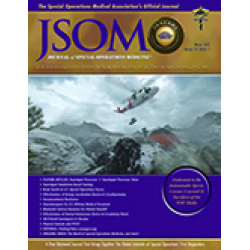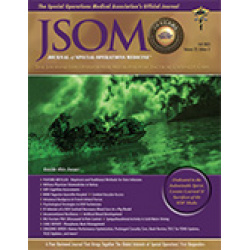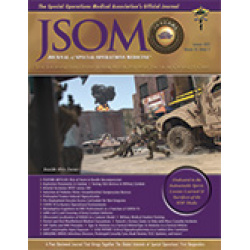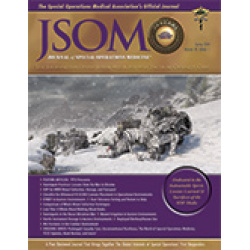Latest Products
Deployed Combat Use of Methoxyflurane for Analgesia
Schauer S, Fisher AD, April MD 24(1). 81 (Journal Article)
Background: The U.S. Military needs fast-acting, non-opioid solutions for battlefield pain. The U.S. Military recently used morphine auto-injectors, which are now unavailable. Off-label ketamine and oral transmucosal fentanyl citrate use introduces challenges and is therefore uncommon among conventional forces. Sublingual suftentanil is the only recent pain medication acquired to fill this gap. Conversely, methoxyflurane delivered by a handheld inhaler is promising, fast-acting, and available to some partner forces. We describe methoxyflurane use reported in the Department of Defense Trauma Registry (DODTR). Methods: We requested all available DODTR encounters from 2007 to 2023 with a documented intervention or assessment within the first 72 hours of care. We analyzed casualties who received methoxyflurane in the prehospital setting using descriptive statistics. Results: There were 22 encounters with documented methoxyflurane administration. The median patient age was 23 (range 21-31) years. All were men. The largest proportion was partner force (50%), followed by U.S. Military (27%). Most (64%) sustained battle injuries. Explosives were the most common mechanism of injury (46%), followed by firearms (23%). The median injury severity score was 5 (range 1-17). The most frequent injuries were serious injuries to the extremities (27%), and 23% of patients (5) received a tourniquet. One-half of the casualties received concomitant pain medications. Only three casualties had multiple pain scores measured, with a median pain score change of -3 on a scale of 10. Conclusion: Methoxyflurane use in deployed combat shows both feasibility and usability for analgesia.


 Español
Español 




